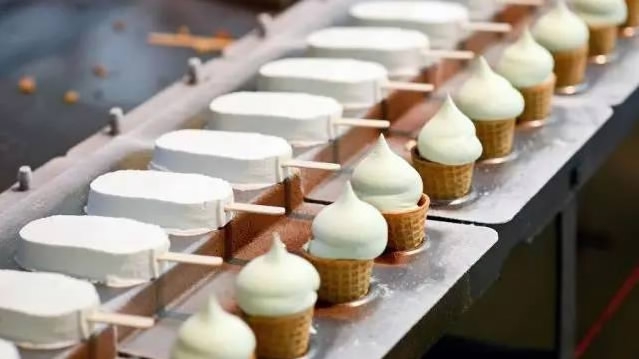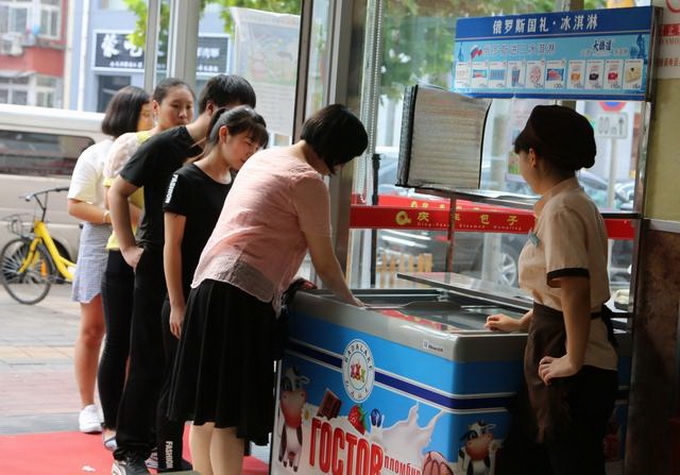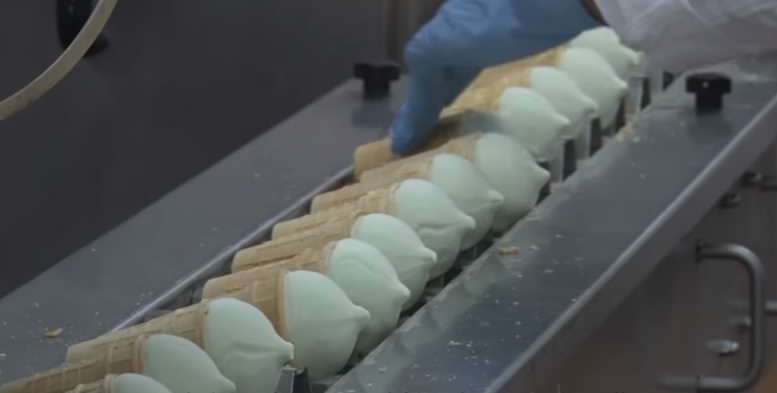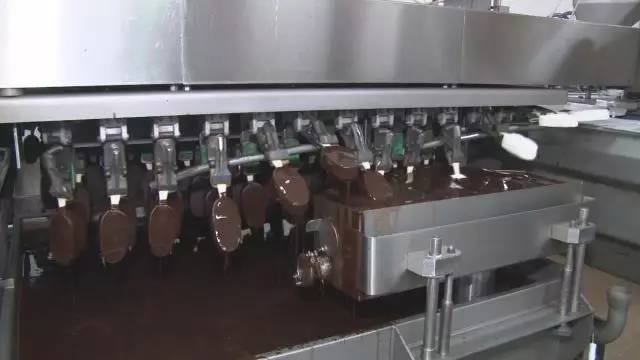
Business
22:32, 14-Aug-2017
Russian ice cream: targeting Chinese market
CGTN

This cooling-treat, which traveled thousands of miles from Russia to China, has been a lifesaver for many this Beijing summer.
Produced by Russian company IceBerry and sold in Qing-Feng Steamed Buns Shop, a time-honored brand in Beijing, this ice cream has gained popularity recently.

"Russia's national gift." The popular sweet treat is seen in Qing-Feng Steamed Buns Shop in Beijing. /Photo via Xinhua News Agency
"Russia's national gift." The popular sweet treat is seen in Qing-Feng Steamed Buns Shop in Beijing. /Photo via Xinhua News Agency
The freezer containing the ice creams was labeled "Russia's national gift"-a phrase which originated last September, as Russian President Vladimir Putin brought a few boxes of that as gift for his Chinese counterpart Xi Jinping when they met on the sidelines of the G20 Hangzhou Summit in east China’s Zhejiang Province.

Russian President Vladimir Putin enjoys an ice cream. /Photo via Xinhua News Agency
Russian President Vladimir Putin enjoys an ice cream. /Photo via Xinhua News Agency
IceBerry is one of Russia's time-honored brands, and its factory is located in Penza, a city 625 kilometers southeast of Moscow. It has been producing dessert for the Kremlin for decades.
This time, Chinese customers are getting a taste of this ice cream which graced the tables of the Kremlin, said the company’s production manager Olga Yagodina.

Olga Yagodina /Photo via Xinhua News Agency
Olga Yagodina /Photo via Xinhua News Agency
The ice cream is priced between 6 to 30 yuan (80 cents to 4.5 US dollars), and each store sells an average of 300 ice creams a day, according to Beijing Daily.

Customers line up to buy Russian ice cream in Beijing. /Photo via Beijing Daily
Customers line up to buy Russian ice cream in Beijing. /Photo via Beijing Daily
Roman Lola, the CEO of IceBerry, told Xinhua News Agency that they plan to export 500 tons of ice cream to China in 2017.
It will not be an easy trip for the ice cream to travel from Russia to China, as the chilly dessert needs to be moved within a temperature-controlled supply chain.

Photo via Xinhua News Agency
Photo via Xinhua News Agency
“Compared to high-end ice cream brands in Europe and the US, the Russian ice cream has an obviously benefit on price," said Wang Xianzhe, a company manager focusing on Russian food imports in China. "The good quality and affordable price, let alone President Putin’s advertising effect, all support the Russian ice cream catching on in China."

Photo via Xinhua News Agency
Photo via Xinhua News Agency
Some 209 tons of ice cream, worth 775,000 US dollars, were imported from Russia to China during the first half of 2017, a record high at the port, according to statistics from Manzhouli Entry-Exit Inspection and Quarantine Bureau.
In addition to ice cream, other Russian-made products are also popular in China, including Russian candy and chocolate.
More than 30 types of Russian goods were presented at the International Exhibition of Food and Beverage in Shanghai earlier this May, as it waited for the Chinese market to open the door.

Try one? /Photo via Xinhua News Agency
Try one? /Photo via Xinhua News Agency
China became a major consumer of Russian food in 2016, according to the Russian Export Center, as it bought some 1.55 billion dollars worth of Russian goods, a 20-percent growth from 2015.
1km

SITEMAP
Copyright © 2018 CGTN. Beijing ICP prepared NO.16065310-3
Copyright © 2018 CGTN. Beijing ICP prepared NO.16065310-3